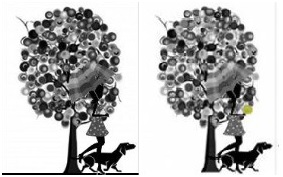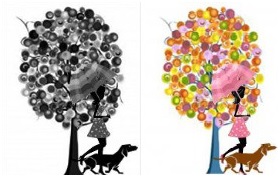10/06/2014
Historically it has been accepted in relation to UK and European Community trade marks that a trade mark registered in black and white gave the proprietor protection for that mark in all colours. Accordingly, it has long been standard practice of trade mark practitioners to file applications for black and white marks to ensure the broadest possible protection.
In April this year, a Common Communication of the Practice of the Scope of Protection of Black and White Marks was released by European Trade Mark & Design Network. OHIM implemented this Common Practice on 2 June 2014 with the resulting changes to OHIM practice:
Genuine Use – A colour version of a trade mark registered in black and white will now only be acceptable for the purpose of establishing genuine use when it does not alter the distinctive character of a trade mark. The policy states that a change in colour will not alter the distinctive character of a trade mark so long as:
- The word / figurative elements coincide and are the main distinctive elements.
- The contrast of shades is respected.
- Colour or combination of colours does not have distinctive character in itself.
- Colour is not one of the main contributors to the overall distinctiveness of the mark.
Priority – A trade mark registered in black and white from which priority is claimed will no longer be considered to be identical to the same mark in colour unless the difference is insignificant. Accordingly, a mark filed in colour will no longer be able to claim priority from an earlier black and white version of the mark unless the difference in colour is insignificant.
Relative Grounds – An earlier trade mark in black and white will no longer be considered identical to the same mark in colour unless the difference in colour is insignificant. Accordingly, if you file an opposition against a colour version of a mark based on a Registration for the mark in black and white if will be safest to rely on the marks being “similar” and not identical.
The test of whether the difference in colour is insignificant is whether a reasonably observant consumer would only perceive the difference when viewing the marks side by side. Examples given by OHIM showing when the colour changes in a mark are insignificant include:


Examples given by OHIM showing when the colour changes in a mark are considered significant are as follows:


The Common Practice will be implemented by many European Community countries including the UK.
This practice change is likely to have important consequences for trade mark owners. It is no longer true that marks registered in black and white give protection for the mark in all variants of colours. Rather this is an issue that will be assessed on a case by case basis adding another grey (pun intended!) area into the realm of trade marks. Just where the line is before a change in colour “alters the distinctive character of a trade mark” or goes from being insignificant to significant remains to be seem.
In the meantime, clients who have historically registered their marks in black and white should review their portfolios to determine if they contain device marks that are registered in black and white but regularly used in colour. If so, it will be worth considering whether new Applications for the colour version of these marks should be filed.
Going forward, trade mark owners will need to consider whether they should file trade mark applications for device marks in colour as well as black and white. Trade mark owners do not want to find themselves in a situation where registration of a mark in black in white is revoked because the use of the mark in colour is held not to be genuine use of the black and white registration.
This article is for general information only. Its content is not a statement of the law on any subject and does not constitute advice. Please contact Reddie & Grose LLP for advice before taking any action in reliance on it.

